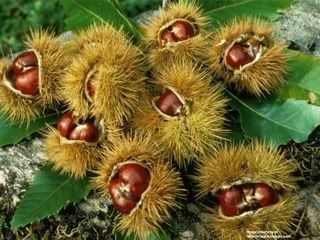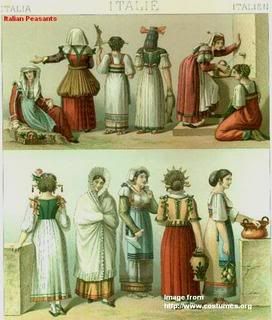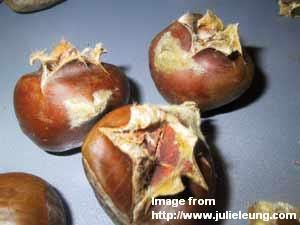To make foods that taste incredible, it is always best to tailor your dishes to what is currently in season. Right now, chestnuts are in full swing, ripe and bursting with flavor. Depending on where in Italy you are, chestnuts are in season from mid-September through January.

Chestnuts have long been a part of the Mediterranean diet. They are one of the few crops that can be grown on the steep mountain slopes during the winter, therefore providing excellent nutrients high in complex carbohydrates, low in fats during those long winter months.
Chestnuts were initially thought of as peasants food.

The work to cultivate the chestnut groves was tenuous and back-breaking. But aristocrats didn’t disdain the chestnut like other seemingly poor foods; as long as the chestnut was dressed up as marrons glacés (candied chestnuts) or another elegant preparation, then the chestnut was allowed to join in Italian high society dinner.
According to Wikipedia.org, chestnuts are making a big comeback in Italian cuisine as the trend for more traditional dishes continue. There are several ways to prepare and use chestnuts, from ordinary roasted chestnuts to the marrons glacés of aristocratic dishes.
My favorite holiday chestnut treat is Chestnut Truffles. It is absolutely decadent when served at cocktail parties, or as a small but rich dessert.
1 ½ lbs chestnuts (your favorite variety will do)
1-2 Tbsp milk
¼ cup rum
½ cup powdered sugar
2 tsp vanilla flavored sugar
Preheat oven to 350 degrees.
Boil the chestnuts until they are cooked through. Puree the boiled chestnuts with the milk. Place the pureed chestnuts and the remaining ingredients in a saucepan and mix over medium low heat for about 5 minutes, stirring well. Remove from heat and let cool. Form into small balls and roll in grated dark chocolate. Cover cookie sheet with parchment paper and place balls on the sheet. Move the cookie sheet into the oven, and let sit for about one minute or until chocolate begins to melt. Remove the Chestnut Truffles from the oven, let cool, and serve.
To enjoy a dessert that harkens back to a time when women wore high wigs and tight bodices, try the marrons glacés.

For this recipe, youll need the marroni variety of chestnuts (they are the largest and most voluptuous of chestnuts).
2 ¼ lbs marroni
18 ozs sugar (roughly more than 2 cups)
1 qt of water
1 vanilla bean (optional)
Salt
Peel the chestnuts and add them to a large pot of boiling, lightly salted water. Boil them for about 20 minutes, then remove the pot from the burner, and let the chestnuts steep five minutes more. Remove them one at a time with a slotted spoon, peeling off the thin skin that covers the nuts but being careful not to damage the nuts themselves (they’ll be soft).
Once you have skinned them, put them in a broad stainless steel skillet.
Take another pot and dissolve the sugar in the water over low heat. Add the vanilla bean if you are using it, and simmer the syrup, stirring it gently with a wooden spoon, until the syrup thickens somewhat (you want it to remain fairly fluid). Pour the syrup over the chestnuts and simmer them over a very low flame for a half hour, then turn off the flame and let them sit for ten minutes more.
Remove the chestnuts one at a time and arrange them on a serving plate and serve them with unsweetened whipped cream (if you like it). You can also sprinkle them with brandy, or serve them in cups, with a little of their syrup spooned over them.
And of course, the old standby. One of the easiest and tastiest options is to roast them. If you dont have a fireplace or a chestnut roasting pan, you can purchase a very inexpensive, thin, steel skillet. Punch holes in the bottom with a thick nail. Now you have a makeshift chestnut roasting pan!

Make sure to cut a small lengthwise incision into the round side of the chestnut before cooking to prevent them from exploding. Put the chestnuts into the roaster, sprinkle them lightly with water, and cook them over brisk heat for 10-20 minutes (depending upon their size), shaking them frequently to keep them from burning.
When they’re done, the skins will have pulled back from the nuts, and the nutmeats will be firm but fork-tender charred spots indicate insufficient shaking. Sprinkle them with a few drops of red wine, (perhaps the red wine youll sip while eating!), wrap them in an old cloth, squeeze them until they crackle, and let them sit in a warm place for five minutes. Peel back the cloth and enjoy!

One of my favorite smells in the winter time, especially if you live in those cold, sloping mountains, is the smell of roasting chestnuts wafting from the chimneys of homes.
Powered by Qumana
